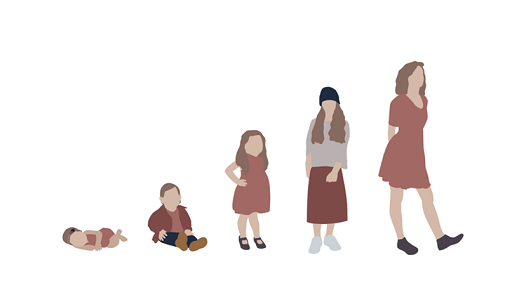3.1: The ‘normal’ versus ‘non-normative’ childhood
From the late nineteenth century onwards, an unprecedented level of attention was paid to the study of children and childhood. This was especially true in the field of child psychology where a child’s maturation towards adulthood was considered to occur in a series of steps or stages, as shown in Figure 3.2 (Crafter et al., 2019). This model of childhood is deeply ingrained in Western society’s notion of what an ‘ideal’ or ‘normal’ childhood should look like. It is a model that promotes the expectation for the ‘ideal’ childhood as a time of innocence, play and socialising (Kessen, 1962, 1979). The ‘normal’ child should be dependent on adults for their care, and kept innocently free from the burdens of everyday life (Burman, 2016). In other words, the argument suggests that ‘childhood’ is a socially constructed notion that changes across space and time. This poses a challenge for children and young people whose life experiences sit outside of these ‘normative’ parameters.
The socially constructed child also presents a challenge for practitioners working with children and young people. Working with Unaccompanied Asylum-Seeking Children (UASC) and migrant children shines a spotlight on how diverse and different children’s experiences of growing up may be. The notion of a child travelling alone and ‘seeking asylum’ does in itself transgress what we feel are the ideal parameters for how childhood should be experienced (Crawley, 2011). This can have concrete implications for the decisions that are made about young people’s lives. For example, whether they are believed to be under 18 years of age in an age assessment, if they should be placed in foster care or semi-independent accommodation, or whether they are considered to be overly ‘mature’ either because of physical appearance, actions or behaviours.
3: ‘Care’ and ‘Childhood’

